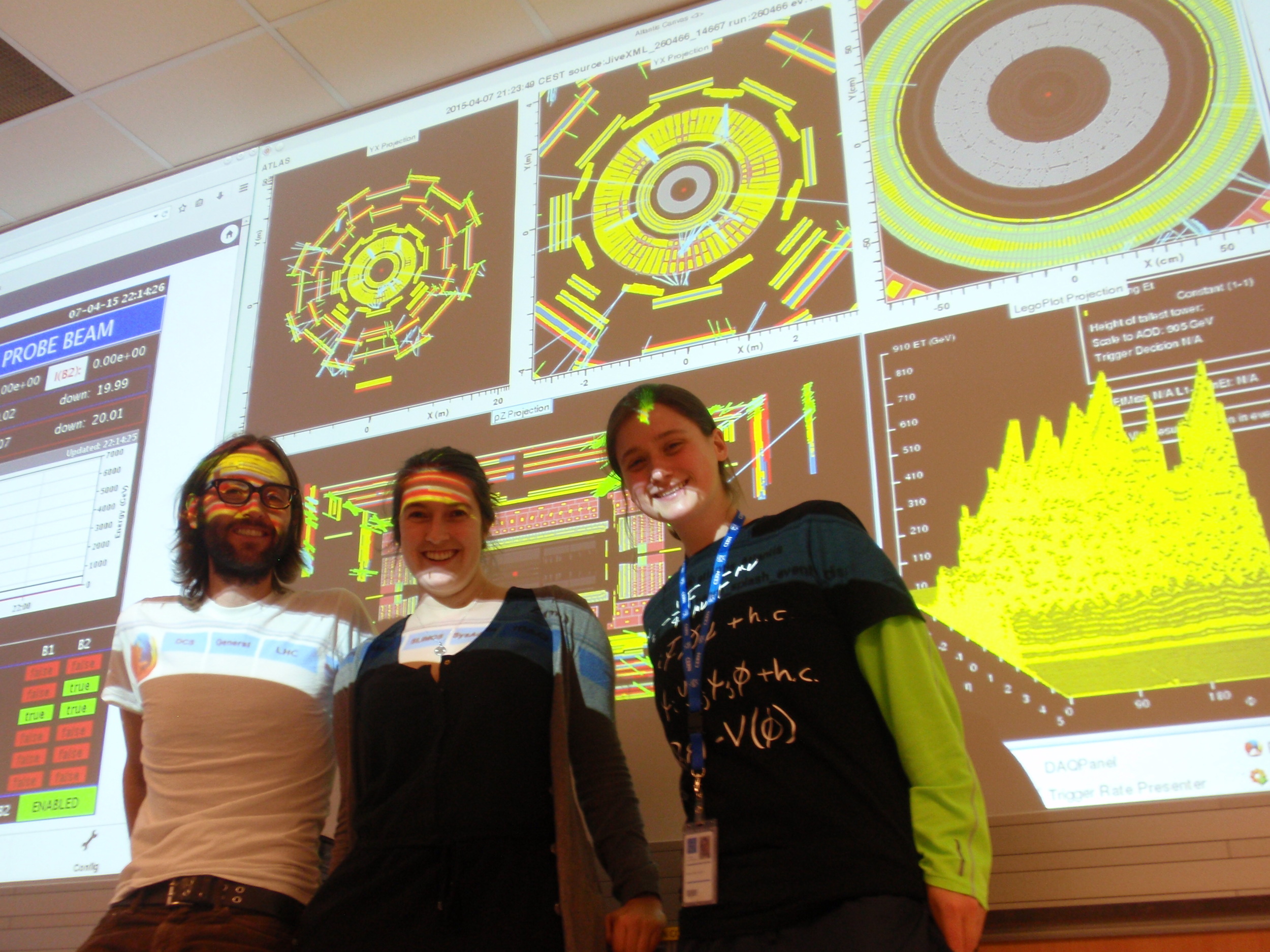
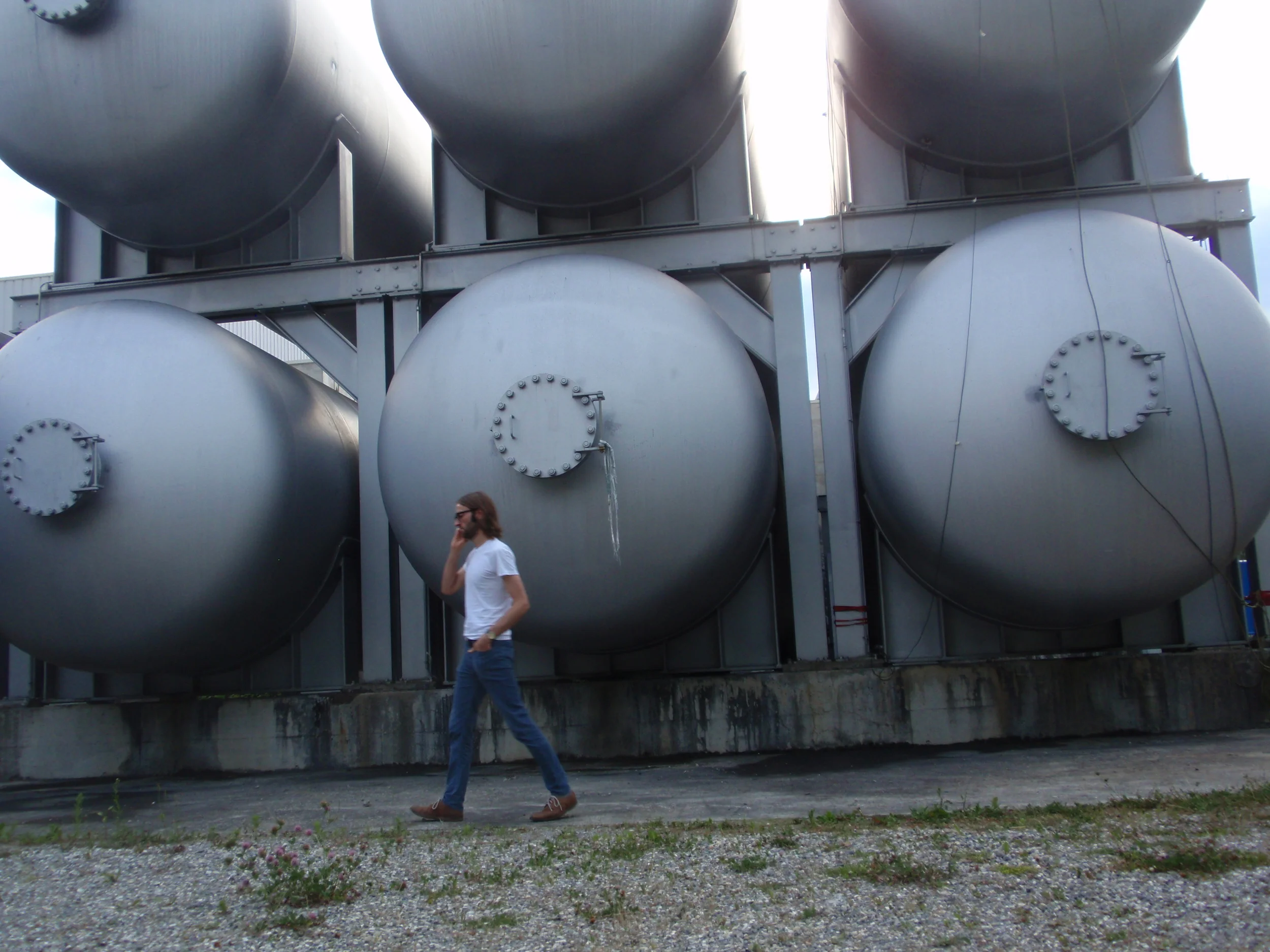
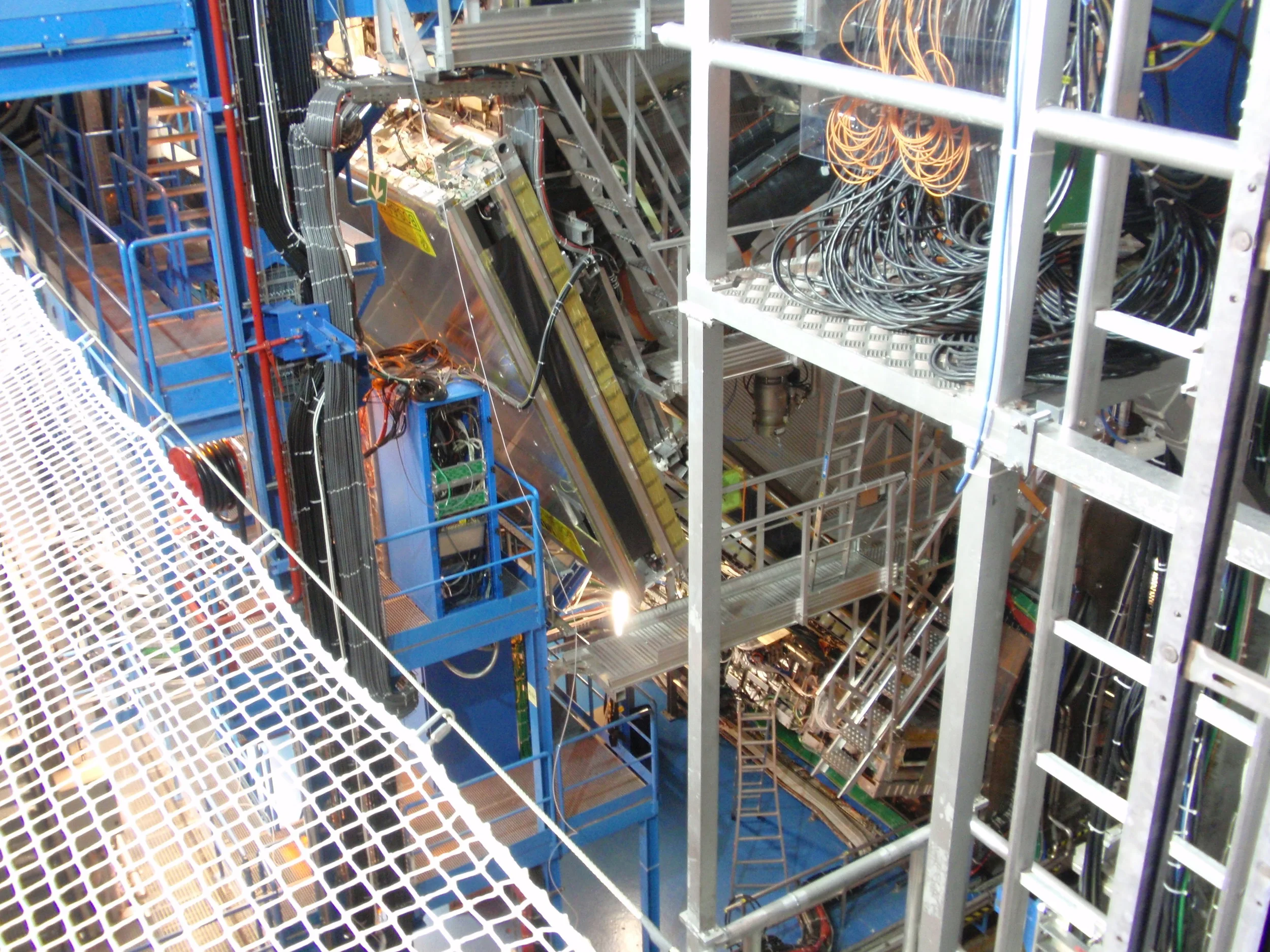

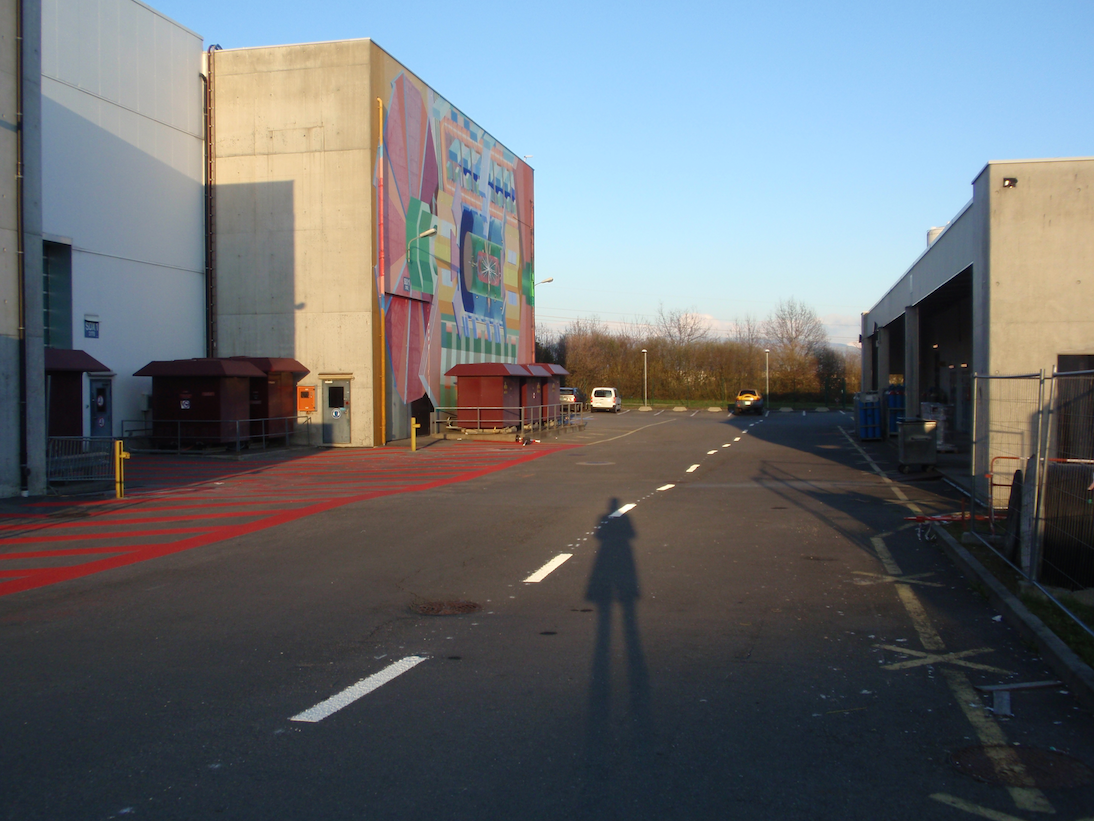
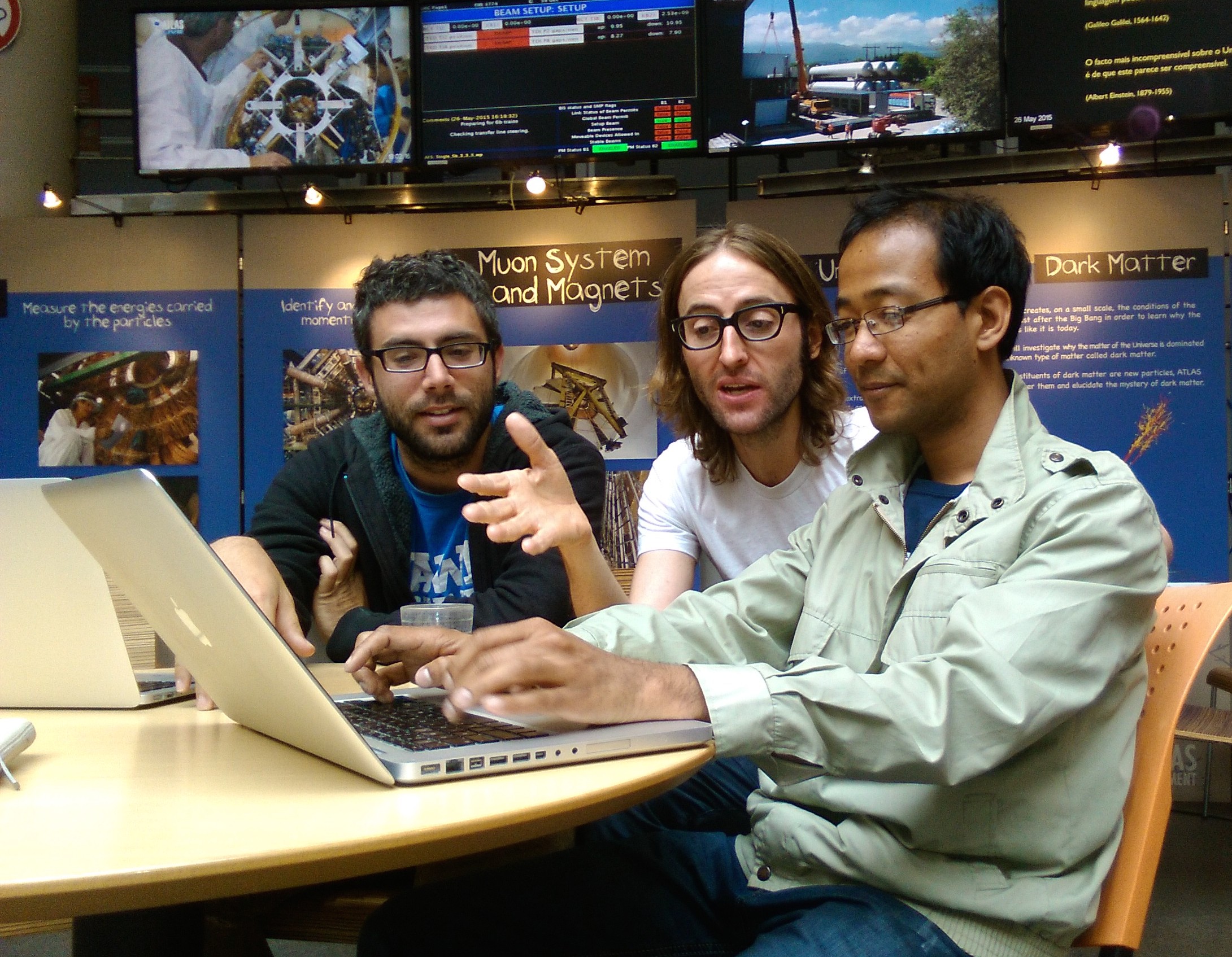

ATLAS is many things. It's a particle physics experiment at the Large Hadron Collider, at CERN. It's a six story-high soda can filled with sophisticated electronics that's buried one hundred meters underground and stuck between two 6.5 TeV proton beams. It's a worldwide collaboration of around three thousand insane physicists who make me a better physicist every day. It's a big-data playground, where we sift through the largest unique dataset in human history looking for explanations for some of the most puzzling open questions of science:
What happened a fraction of a fraction of a fraction of a second after the big bang?
What is dark matter? No, really, what is it? What's it made of?
Why is gravity so weak compared to the other forces of nature?
Are there other forces of nature than the four we know?
Is the Higgs boson the only fundamental scalar? Really? And why?
Does nature respect one last, pretty straightforward symmetry allowed by particle physics, that between fermions and bosons? If not, why not?
ATLAS is one last thing: A constant, invigorating challenge and conduit for curiosity.
My ATLAS research is detailed on my CV.